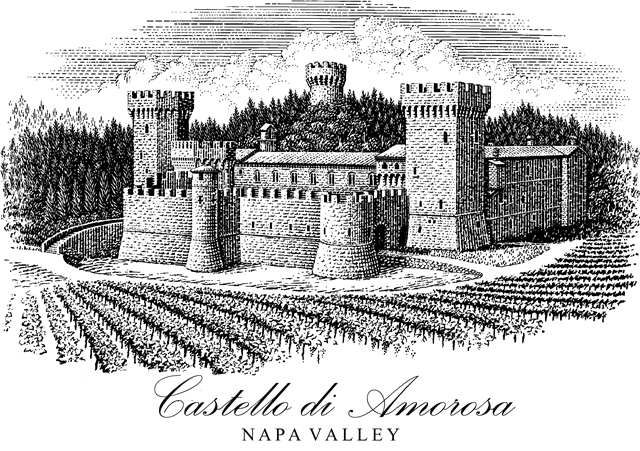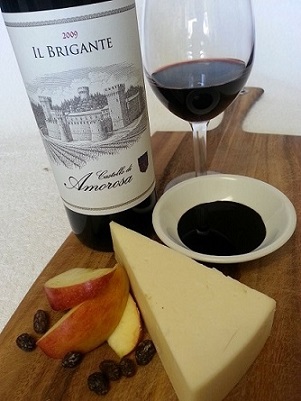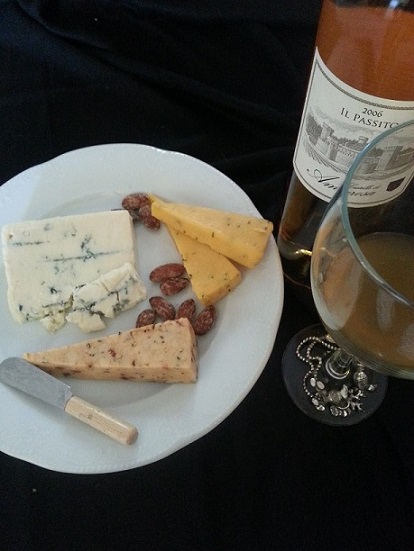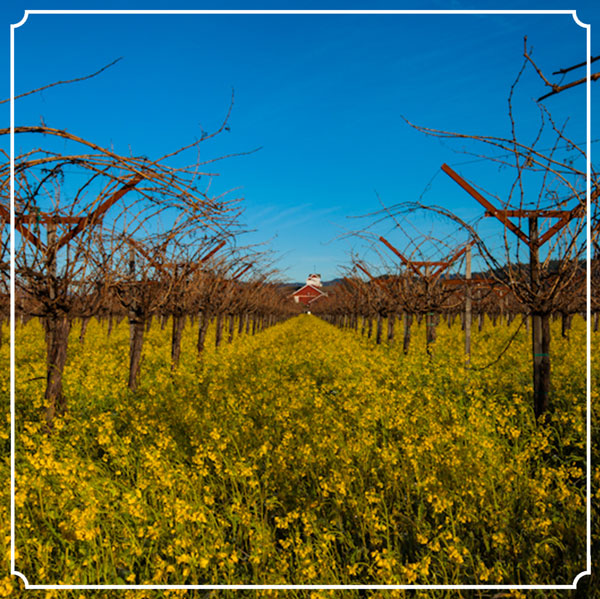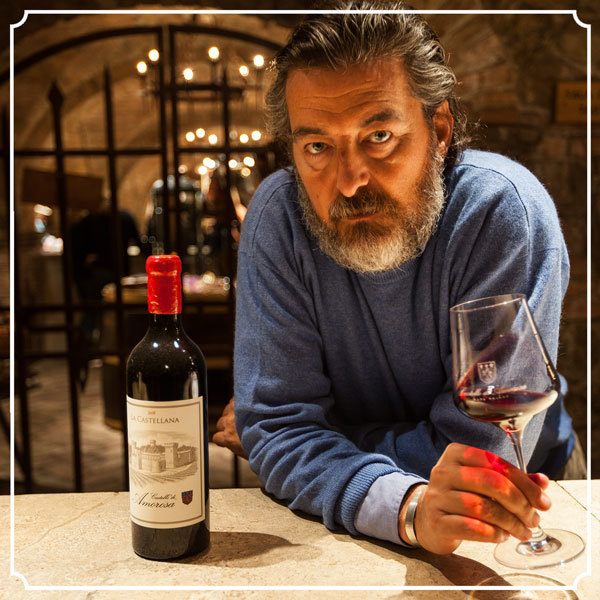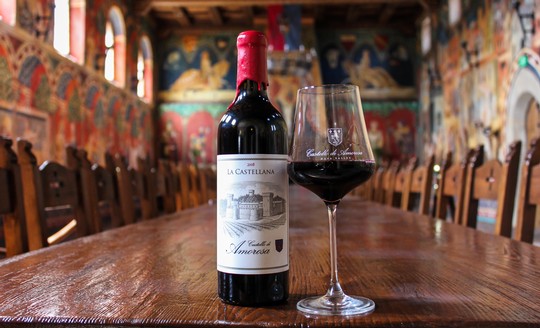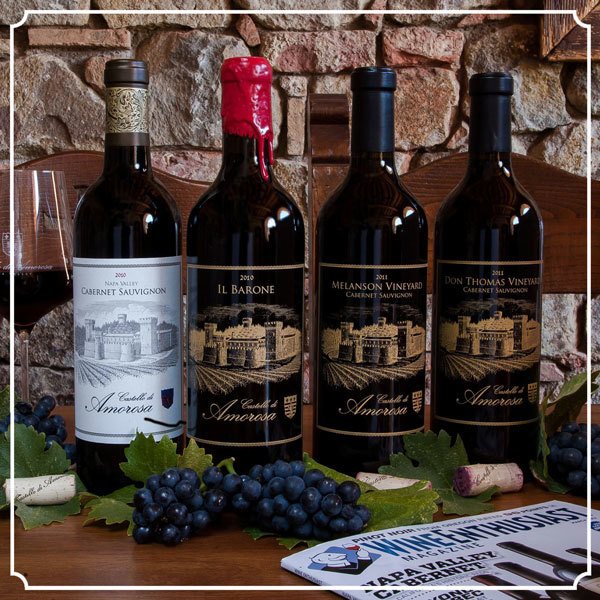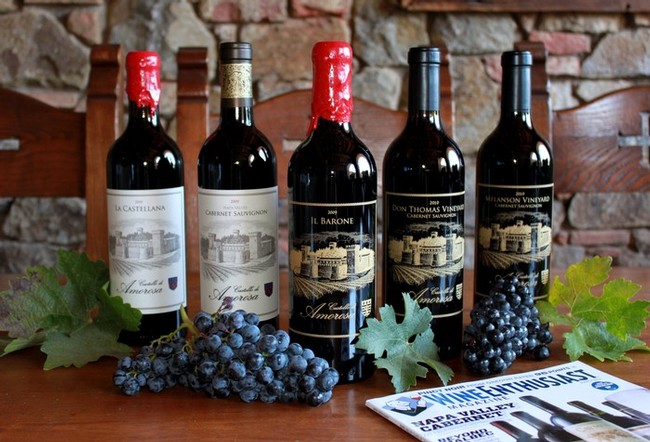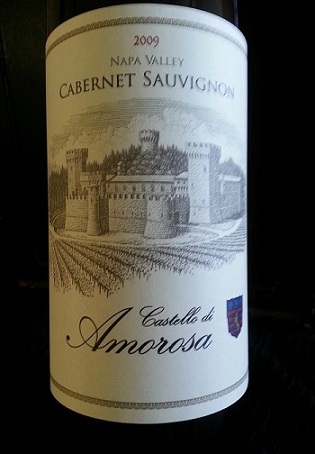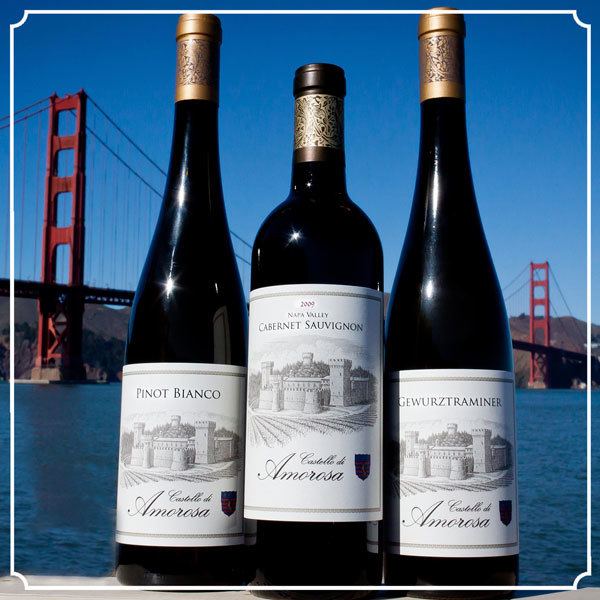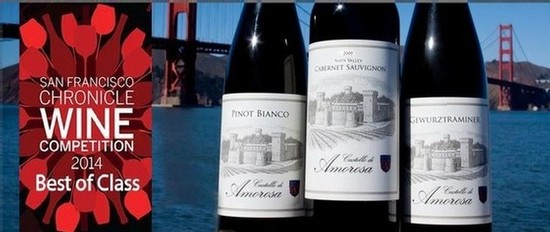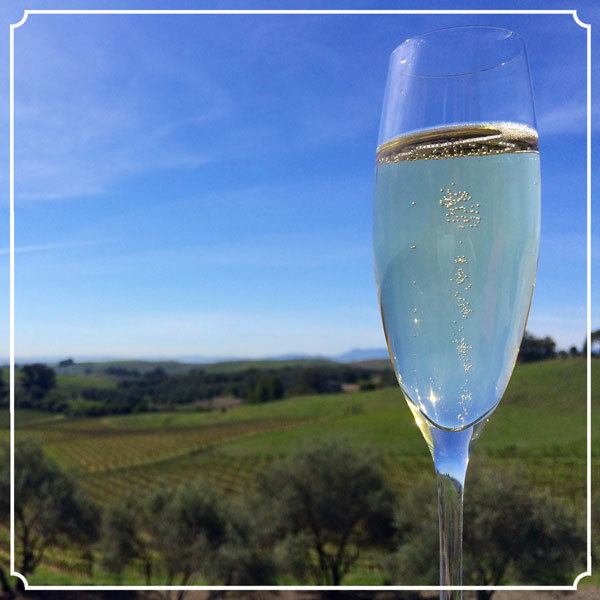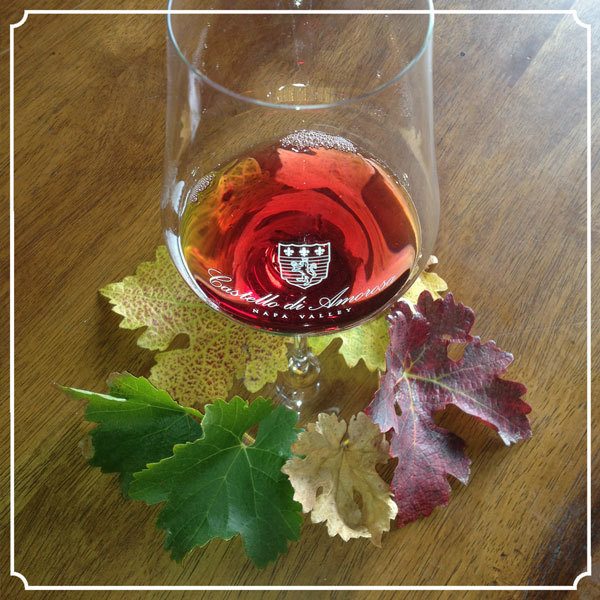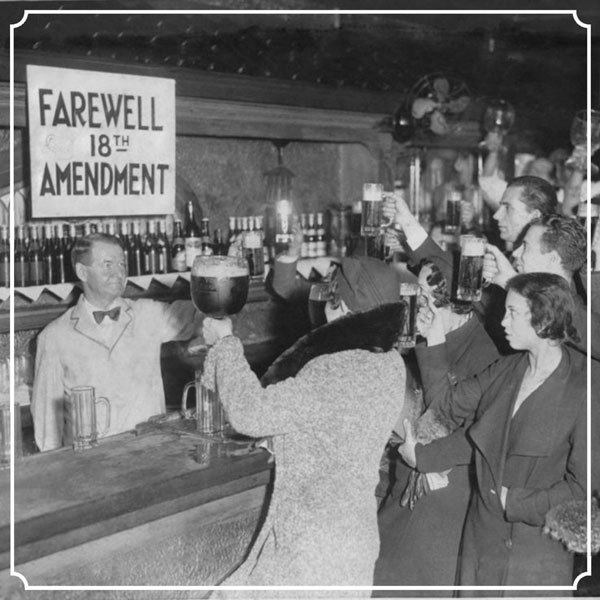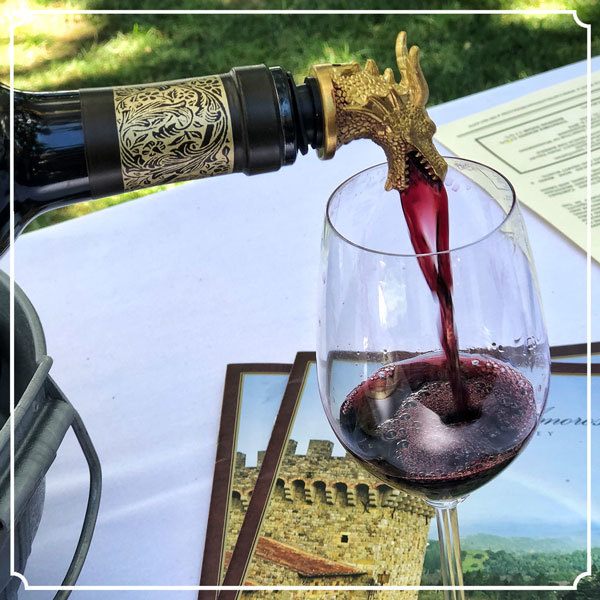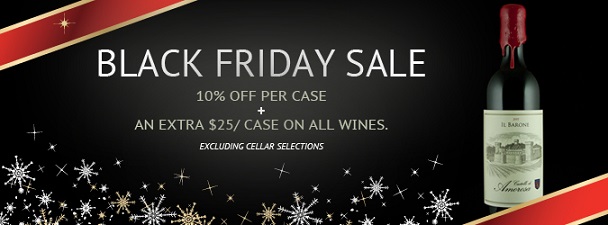Cheese and Wine Whiz

Mary Davidek
A Royal Trio: Bread, Wine and Cheese
Cheese. It seems recently I’ve been spending a lot of time thinking about it, researching it, eating it, and writing about it. What makes this bacteria-induced, mold-laden, milk by-product so delicious in so many ways? From mac and cheese to grilled cheese sandwiches to omelets to enchiladas… is there anything good cheese doesn’t make better? Okay, I realize that is a rhetorical question which does not qualify an answer. Cheese-heads know of which I speak; plain, sliced, melted, and even burnt as one of my personal favorites is baked oozing cheese crusted on the edge of a big pan of lasagna.
In a word; cheese is yummy!
Cheese is not to be relegated to an also ran or a p.s. it is not Ed Mac Mahon to Johnny. No, the cheese can stand alone. Consider this, if you serve bread and a glass of wine with cheese, you now have a meal once reserved for royalty or highly ranked officials of medieval Western Europe. They favored hard, well-aged, and slightly salty cheeses, Parmigiano-Reggiano anyone?
Perhaps it is these century-old roots at the foundation of this tasty trio’s designation as the ‘trinity of the table’; bread, wine and cheese. In fact, this mouth-watering combo has something in common aside from being absolutely delicious. Bread, wine and cheese depend on yeast and bacteria for their development. Without the changes brought about by fermentation bread would not rise, wine would be lacking alcohol and we would exist in a world devoid of cheese. Fortunately we live in a world of a cheese-lover’s Shangri-La!
This homage to fromage is not intended to be a crash-course of pairing wine and cheese, but, simply an occasion to open the proverbial windows of our palate and imagine the possibilities…
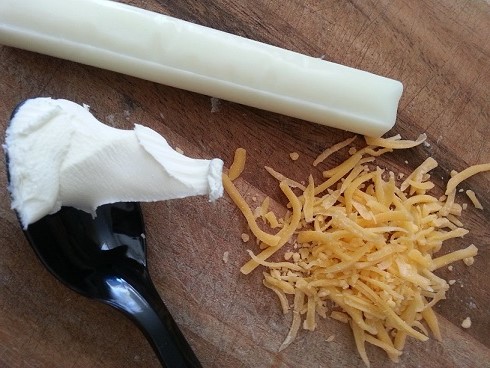
String, cream and grated–gateway cheeses which gave every American cheese-loving kid their humble beginning
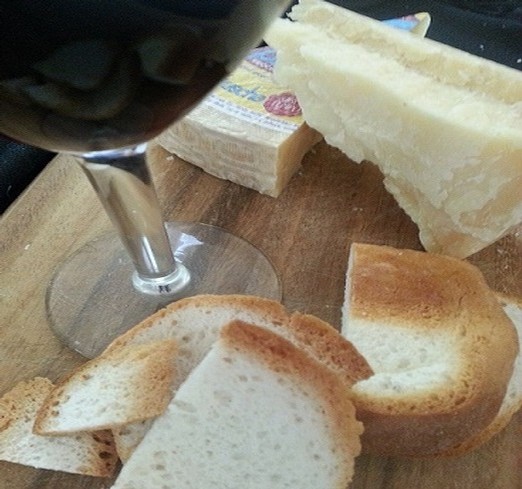
Eat like a king with this royal trio of bread, wine, and cheese. Bread? Nothing fancy, sometimes basic is all you need. Wine? Castello di Amorosa Il Brigante is just the right blend. Cheese? Piave Vecchio. Parmesan is well-suited for grating; Piave is slightly higher in milk fat which makes it a creamier option for a cheese board presentation.
Kick it up a notch. Add a reduction of balsamic to elevate this cheese pairing to a sweet and salty palate sensation.
The quintessential cheese plate typically offers a selection of 3 or more cheeses and makes use of color and texture. Combine a hard cheese and a double cream with a smoky cheddar. With the abundance of orange cheese, blue cheese and practically multicolored cheese; it is easy to add a splash of color.
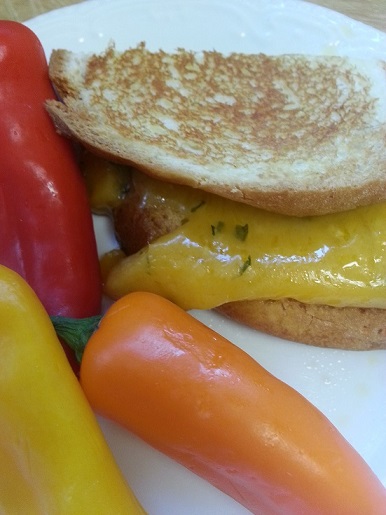
A conventional grilled cheese becomes an amazing culinary creation by using distinctive cheeses and experimenting with flavors. Pictured is Cotswold, a variation of Double Gloucester with the addition of chopped onions and chives. Cotswold is creamy, buttery, sweet and mild. Served with roasted sweet peppers- it is dangerously delicious.
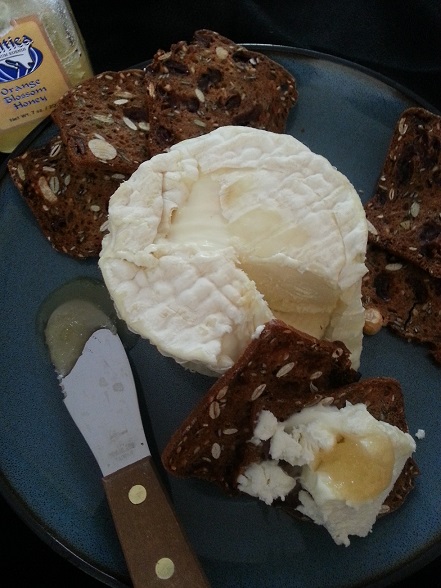
La Tur is an Italian triple cream from the Piedmont region of Italy and is made from an equal mixture of cow, sheep and goat milk. Typically with double and triple creams, I prefer a bright white wine like Pinot Bianco or a Dry Gewurztraminer. Here, I served La Tur with a dollop of orange blossom honey on a fig and oat cracker. Paired with Il Passito, the crown jewel of Castello di Amorosa– this was cheese and wine nirvana!
Roll into spring

Mary Davidek
Roll into spring
Ah, spring– Vernal Equinox! Vernal refers to spring and equinox is derived from Latin meaning “equal night” as days and nights are approximately equal everywhere. Increased daylight and the promise of warming temperatures brings the reawakening of flora and fauna. Spring refers not only to the time of year, but also to a season of rebirth, rejuvenation, renewal, resurrection, and regrowth; literally to ‘spring’ forth.
In Wine country, the dry winter grass has greened; the yellow –orange mustard is almost blindingly brilliant. Birds are chirping as they ready nests for soon to be hatched chicks. The low croak of frogs around the pond echoes and the rhythmic chirp of the night’s crickets are a sure sign of mild evenings.
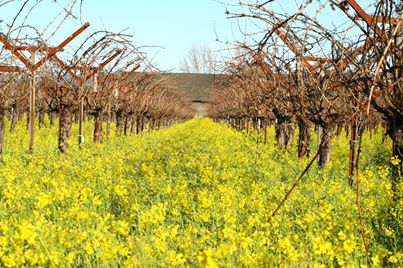
In the vineyard, young fragile buds break through as grapevines begin their annual growth cycle.
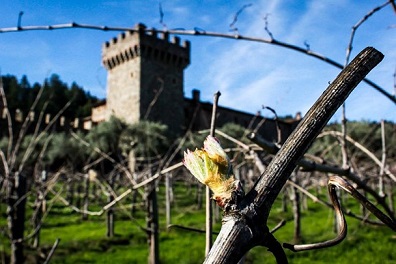
The extra winter blanket is folded and tucked away and the windows are now opened to welcome a fresh breeze each morning. A big glass of iced tea in the afternoon is suddenly more appealing than a hot mug of Earl Grey and a day at the coast requires umbrellas intended for shade instead of showers.
Spring also holds the possibility of picnics, baseball games, back yard barbecues and dining al fresco. Days off spent indoors seems sacrilegious when the warm sun demands our presence. For dinner; thoughts of salads and grilled kebabs are edging out from the shadow of winter’s hearty soups and casseroles and a perfectly chilled white wine seems like a great way to end a day as we linger a little longer each night before twilight.
As you ease into Spring, relax a bit later each day, stop and smell the green—and if there is snow on the ground outside your door, hang on! You’ll be rolling into spring before you know it.
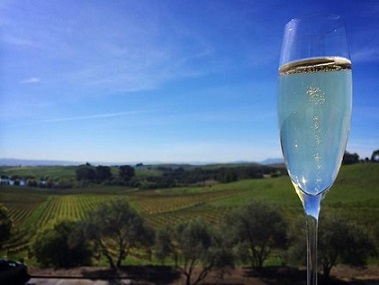
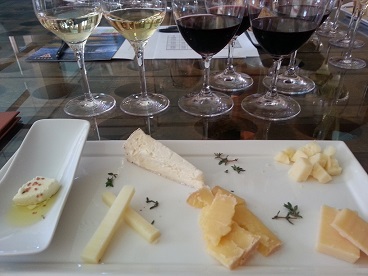
A beautiful Spring day in the Carneros region of Napa Valley!
First, a stop by Domaine Carneros for sparkling and then a cheese pairing at Artesa Winery. This is what I call a ’market research’ day!
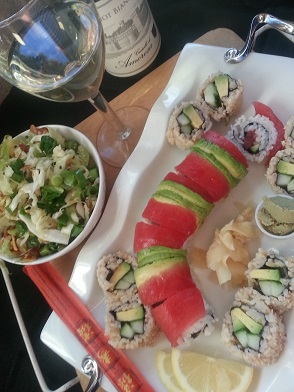
After a long day of tough research (ahem), dinner has to be quick and easy. This Asian cabbage slaw is flavorful, easy to make, and packed with healthy veggies. The 2012 Castello di Amorosa Pinot Bianco is an elegant juicy fruit- laden white; light, zippy and refreshing. Perfect with this Rainbow Sushi Roll and exotic Asian flavors.
Asian Cabbage Slaw
Ingredients:
¼ cup soy sauce
¼ cup mirin (or white wine vinegar)
2 tablespoons water
1 teaspoon sesame oil
1 Pinch of red pepper flakes
1 tablespoon brown sugar
1 tablespoon grape seed oil
½ large white cabbage, shredded
1 cup thinly sliced scallions
¼ cup toasted almond slivers or cashew pieces
2 ounces broken ramen noodles
1 tablespoon toasted sesame seeds
Mix soy sauce, mirin, water, sesame oil, red pepper flakes and brown sugar in a small pot over low heat. Heat, stirring, just until the sugar has fully dissolved. Whisk in the grape seed oil and set aside to cool.
Place the cabbage, scallions, almond slivers, and uncooked noodles in a salad bowl. Pour half of the dressing over and toss until every piece of vegetable is coated. Add more dressing until the salad is well coated. The remaining dressing will keep in a sealed container in the fridge for at least 1 week.
Garnish with sesame seeds or mandarin orange slices.
Artistic Super Tuscans

Mary Davidek
Artistic Super Tuscans
You may suspect a read detailing the work of Leonardo da Vinci, Michelangelo or Botticelli as Tuscany is known for its artistic contributions. Florence, the heart of Tuscany, is considered to be the birthplace of the Renaissance and is one of the most important cities in the world for art lovers and historians. Tuscany boasts some of the world’s most prized works of art in the numerous museums and art galleries, the Uffizzi, the Pitti Palace, and the Bargello, just to name a few.
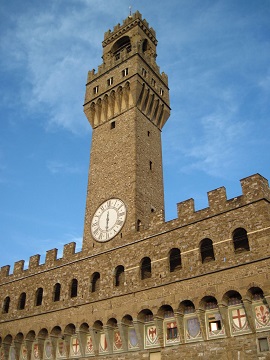

The Uffizzi Gallery (left) and the Palazzo Pitti (right) are home to some of Tuscany’s most valuable works of art.
Aside from its artistic legacy, the cultivation and appreciation of wine is also deeply steeped in the history of Tuscany. Italy is one of the oldest wine-producing regions of the world and is still the largest wine producer by volume. There are over 350 different wine grapes commonly cultivated in Italy and many of these are indigenous to Tuscany. In Tuscany you can find everything from unpretentious local village wines to more sought after and prestigious wines like Brunello de Montalcino, Chianti Classico or Super Tuscans.
The ‘super’ heroes of Italian wine
In the early 1980’s prominent Tuscan wine producers believed the legal rules of the DoC and DoCG (Italian wine law) governing the production of Chianti were too restrictive. For example, they required the use of some white grapes and they prohibited blending non-indigenous grapes i.e. Cabernet Sauvignon, Merlot or Syrah. In an effort to produce the best wines and embrace artistry in their craft they continued to use these less traditional grape varietals. Although not legally defined or regulated, the term “Super Tuscan” was coined to distinguish these artistically expressive wines from the inexpensive, lower quality wines that were typically associated with the term vino da tavola, or ‘table wine’.
Today, super Tuscans use the legal labeling of IGT (Indicazione Geografica Tipica), which gives producers more flexibility, or artistic license, and certainly has more cachet than vino da tavola. Super Tuscans now represent some of the most luxurious wines of Italy and tend to be modern, big and rich—and often carry a price tag exceeding $100- $200 a bottle.
Some super Tuscans contain Sangiovese but others are made solely from Merlot (like the famous Tenuta dell’Ornellaia Toscana Masseto), or from a blend of Cabernet Sauvignon and Syrah (Riccardo Baracchi Toscana Ardito), or from even less traditional varietals, like a combination of Petit Verdot, Cabernet Sauvignon, Syrah and Merlot (Argiano Toscana Solengo).
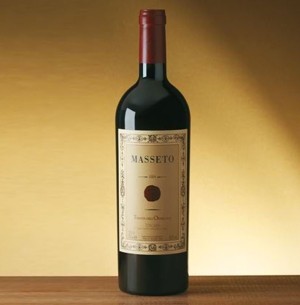
Castello di Amorosa’s 2009 La Castellana is 70% Cabernet, 15% Sangiovese and 15% Merlot. Exotic dried plum and tinder box on the nose and a refined palate of brooding dark cherry and dusty cocoa.
Our 2010 vintage, the first blended by Sebastiano Rosa of Italy’s famed Sassicaia has garnered a whopping 92 points from James Laube of Wine Spectator.
Sebastiano may be Castello di Amorosa’s Super-hero Tuscan!
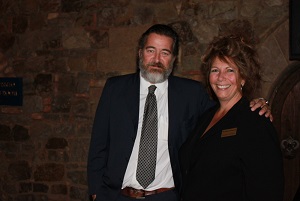
Score!

Mary Davidek
Score! – Wine Rating Scale Explained
American Idol, Miss USA, The Olympics, elections, books, dancing, movies, food, wine. From singing competitions to the food we eat and the wine we drink, it is compared and calibrated by a score. What are the parameters used to grant a number or a rating and how reliable are ratings when so much of what we find pleasing, appealing or excellent is purely subjective. For instance, can we look to a score on a bottle of Cabernet Sauvignon to gauge a wine’s potential for enjoyment when individual tastes vary so widely? Wine is scrutinized, gauged and rated not by peers or consumers but, by ‘professionals’ who ascribe these ratings as a score intended for submission to the public via magazines, websites, social media etc.
Let’s dissect and analyze what a wine score is. What goes into a wine rating?
A wine rating is a score assigned by one or more wine critics for a wine tasted as a summary of that critic’s evaluation of that wine. A wine rating is therefore a subjective quality score, typically numerical. Over the last couple of decades, the 50-100 scale introduced by Robert M Parker Jr. has become the standard. This wine rating scale is now used by ‘the big 3’, Wine Enthusiast, Wine Spectator, and Wine Advocate.
95-100 Classic: a great wine
90-94 Outstanding: a wine of superior character and style
85-89 Very good: a wine with special qualities
80-84 Good: a solid, well-made wine
75-79 Mediocre: a drinkable wine that may have minor flaws
50-74 Not recommended
In addition to a simple numerical score most wine ratings are meant to be a supplement to the wine tasting notes, which are brief descriptions of the critic’s impression of the wine, including aromatics, flavor qualities, and ageing potential or drinking window. However, the emphasis is more often on the score applied by a critic rather than on the actual tasting notes.
Castello di Amorosa wines have been well received by ‘The Big 3’. Parker’s accolades for Il Barone and La Castellana were a huge boon for Castello di Amorosa as one of our first published big ratings. Wine Enthusiast’s critical acclaim for Castello’s wines is a source of great pride and most recently, Wine Spectator has granted some very big numbers indeed.
2010 La Castellana: James Laube, Wine Spectator (92 Points) – Intense, with firm, ripe, vibrant cedar, red and dark berry, anise and loamy earth flavors, framed by chewy tannins and ending with a long finish laced with notes of black licorice. Drink now through 2024.
2010 Don Thomas: James Laube, Wine Spectator (94 Points) – Amazingly complex and refined, tuned to a mix of red and dark berry that’s elegant and graceful without sacrificing Cabernet’s power and torque. Ends with classic Bourdeaux-like cedar and cigar box touches, gliding along with fine-grained tannins. Drink now through 2028.
In an effort to remain unbiased, educated and in-touch with the amazing wines of Napa Valley we conduct blind tastings throughout the year for our Castello staff to participate in.
A great tasting needs a great room!
We tasted 27 different Napa Valley Cabernet Sauvignon in the Great Hall of Castello di Amorosa–
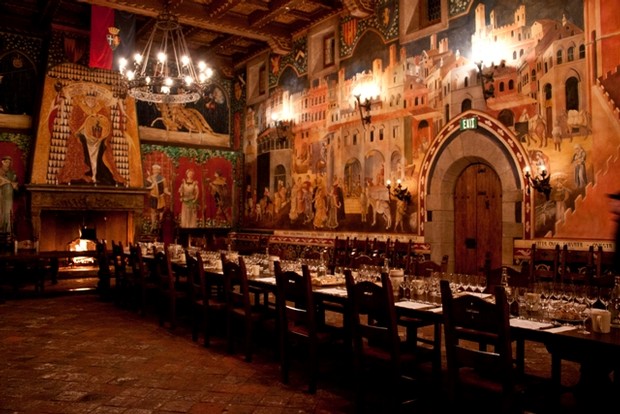
Here is the line-up….

The bottles were placed in a brown bag and numbered by a non-tasting non-voting participant….
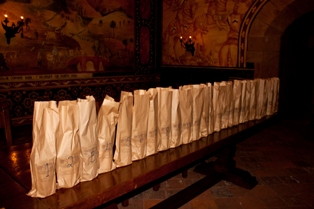
….which guarantees an unbiased result.
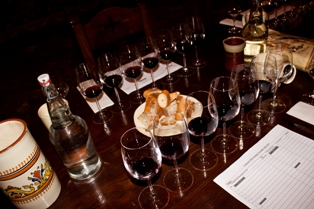
Castello Pres Georg Salzner and Vice President Jim Sullivan enter the results.
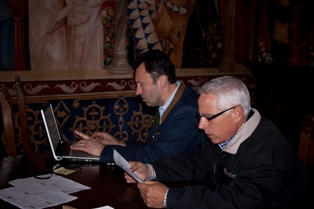
The room cheered when the winner was revealed!
Check out more great scores for Castello di Amorosa’s wines-
Castello di Amorosa Wine Accolades
A sweet finale on the Castello di Amorosa Royal Pairing, the Fantatini. Recipe?… Simple. Scoop and pour!
Opening Ceremonies and Gold Medals

Mary Davidek
Opening Ceremonies and Gold Medals
As the western United States wades through another year of drought and record- breaking almost non-existent rainfall totals (so far!), old man winter has tackled the mid-west and sucker-punched much of the nation with record-breaking cold temps. Another event is approaching to further benchmark winter 2014. On February 06 the 22nd Winter Olympic Games begin in Sochi Russia—and the opening ceremonies televised on February 07 are sure-to-be epic.
The first celebration of the Winter Olympic Games was held in Chamonix, France in 1924 and have now been hosted on three continents. Twelve countries have attended every Winter Olympic games and six of those (Austria, Canada, Finland, Norway, Sweden and the United States) have earned medals at every Winter Olympic Games. However, only one – the United States – has earned gold at each Olympic Games.
In wine country, January ushers in one more iconic winter event, The San Francisco Chronicle Wine Competition. This competition began in 1983 as the Cloverdale Citrus Fair Wine Competition. Today, it is known as the San Francisco Chronicle Wine Competition and holds the title of the largest competition of American Wines in the World….a wine Olympics. On the subject of olympics and medals and earning gold (in wine competitions there is a double gold and the coveted Best of Class!), I could turn this into an all-around high-five big kudos to Castello di Amorosa’s amazing wine making team with the recent Gold Medal performances but instead, I am getting ready for a sure-to-be-epic opening ceremony of my own, time for a glass of gold medal winning Cabernet Sauvignon.
Beyond Double Gold—Best of Class
♦ 2012 Pinot Bianco
♦ 2012 Dry Gewürztraminer
♦ 2009 Napa Valley Cabernet Sauvignon
Best of Class and tonight, best in the glass
2009 Castello di Amorosa Cabernet Sauvignon is one of my favorite Cabernets. It exhibits depth and strength but exudes finesse and elegance. Exactly what every gold medalist needs—power and grace!
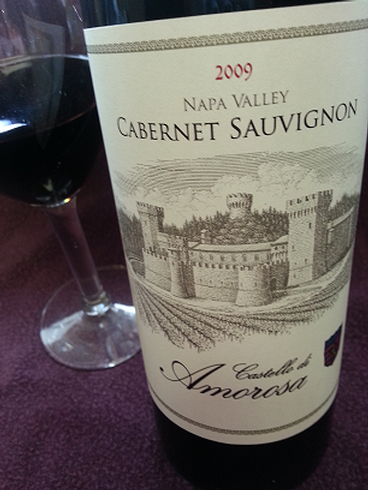
Opening Ceremony Night Dinner –Because timing is important too!
Salisbury Steak with Fingerling Potato Hash
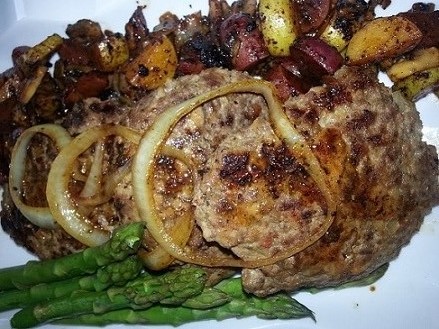
Make this revised classic in 30 minutes!
For the Salisbury Steaks combine:
- 1.5 pound lean ground beef
- 1 tsp. coarse ground pepper
- ½ sweet onion finely chopped
- ½ package onion soup mix
- 1 tsp. mustard
- 1 tsp. ketchup
- 1 egg
- 2 tsps. Worcestershire
Form into 4-6 oval patties and brown in large sauté pan, approximately 2-3 minutes each side. Remove and place in shallow backing dish and finish in 350 degree oven for 10-15 minutes.
Potato Hash:
Dice potatoes, mushrooms, and remaining ½ sweet onion. Brown onion in 3 Tbsp. butter. Add mushrooms and potatoes after onions have begun to sweat. Add beef stock/broth, salt and pepper to taste. Bring to a slow simmer adding broth as needed approx.15 minutes.
Remove Salisbury Steaks from oven and serve with hash
Enjoy!
Experience Taste

Mary Davidek
Experience Taste
While enjoying a ‘Royal Pairing’ at the Castello, it happened. Once again, the stage was perfectly set. The winter wind was blowing and the unending sunshine had temporarily given way to much-needed rainfall. Through looming clouds the late afternoon sun peeked out just enough to splash a bright ray of light dazzling the Vaca Mountains. During this tasting experience….it happened…we fully experienced the tasting and the afternoon was thoroughly enjoyed by all.
Is a wine tasting experience simply a contemplation of taste? To savor or enjoy on our palate? Or, is how we taste influenced by all of our senses and emotions subject to and affected by our surroundings? Wine tasting is defined as the “palate’s examination and evaluation of taste”. I can’t find fault with this scientific and clinical definition, but, it does seem sterile. When tasting wine our sensations of taste and smell are fundamental, however, by setting the stage we can taste not just what is in the glass, but, we can savor the entire experience; experience taste.
A wine tasting experience is visual- demonstrated by Castello president Georg Salzner and Dario Sattui

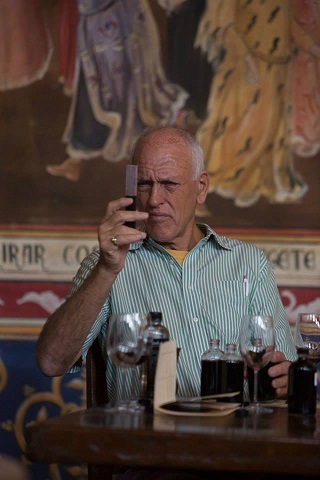
Not only by examining the content of the glass….
a beautiful environment impacts our enjoyment of an experience.
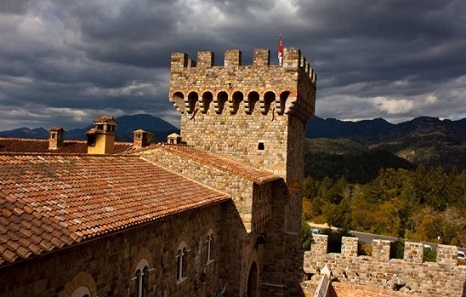
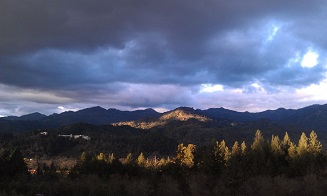
The room was picture-perfect, warm and inviting. The glasses were glistening and the candles were glowing.
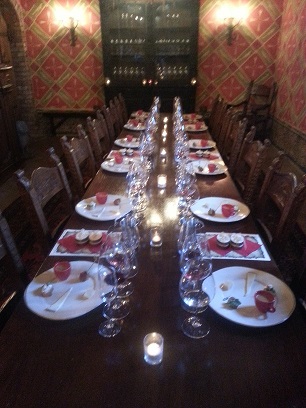
Many chefs are fond of the saying, “we eat with our eyes first”, and there is research to support this. Studies have shown when we find food visually appealing, not only do we enjoy it more, we also absorb more nutrients from it.
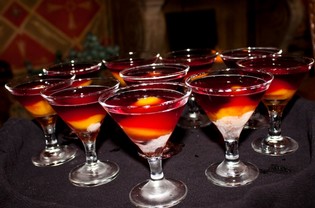
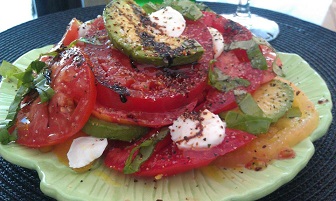
What we hear also has impact. Music evokes emotions and feelings and can be far more powerful than spoken language. Andrea Bocelli gets me every time…

The most important element is to surround yourself with friends and people you love. Create a tasting experience whenever you want and wherever you are and you will truly experience taste.
Castello team members Alison, Jason, Kylee and Melissa sharing laughs and great vino!
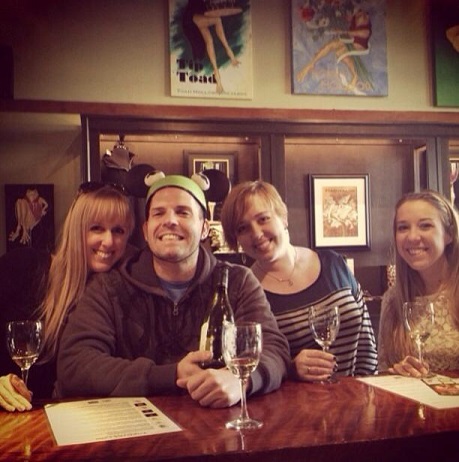
My husband and I sharing a moment….salud!
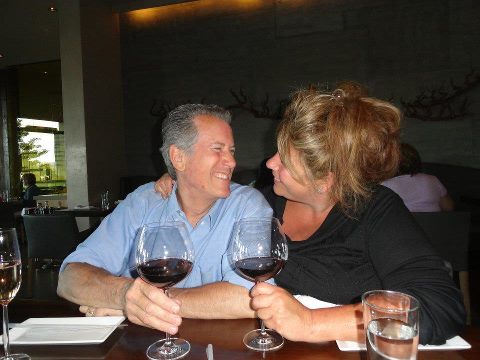
My 2014 Food and Wine Resolutions

Mary Davidek
My 2014 Food and Wine Resolutions
According to research conducted by the University Of Scranton Journal Of Clinical Psychology, although the majority of Americans make annual proclamations and set yearly goals with good intentions, less than 8% of us actually achieve success in keeping New Year’s resolutions. Here is a list of the top 10 yearly resolutions:
- Lose weight
- Get organized
- Save money
- Enjoy life to the fullest
- Get fit and healthy
- Learn something exciting
- Quit smoking
- Help others with their dreams
- Fall in love
- Spend more time with family
The sure way to improve on this dismal statistic? Set obtainable goals. Unrealistic resolutions are destined for failure so I’ve created a list of 10 highly achievable food and wine resolutions to put myself on task over the next 12 months. Even if I don’t strike the entire 10, I am bound to have a great time trying! In 2014 I resolve to…
♦ Make a cheese soufflé
A masterpiece of a thickened white sauce paired with flavorful cheese. The inside is delicate and warm and the bottom and sides are crusted together forming a heavenly thick cheese layer. Nirvana! 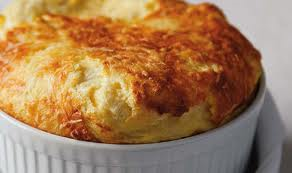
♦ Eat more fish
Seafood is healthy, light and the perfect canvas for many amazing spices and preparations. My good friends Tim and Carol Berg at www.great-alaska-seafood.com have spoiled me rotten with the freshest seafood available and this feast was no exception. Scallops with Pappardelle pasta in a Tarragon cream sauce. Decadent!
. 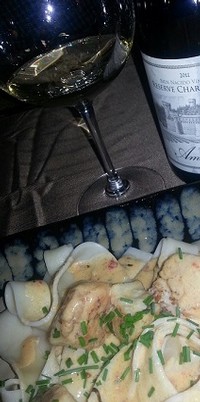
♦ Pair more sweet wine with savory foods
On the Royal Pairing tour at the Castello, sweet and savory is a palate pleaser and always promises alluring and exotic pairing possibilities. Castello di Amorosa Dolcino Gewurztraminer and Moroccan spiced pork loin looming on the horizon.
♦ Try one new restaurant a month
Even here in the promised land of epicurean delights –I get in a rut. The same four restaurants seem to be on my go-to list not because I don’t have seemingly infinite choices but because…well… the choices can seem infinite! January is a great time to start as it is Napa Valley Restaurant Month and a perfect opportunity for new restaurant adventures.
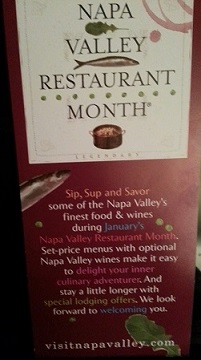
♦ Visit one new winery a month
With 450+ wineries just in Napa Valley and 1600+ in a 150 mile radius! How many days in a year?
♦ Eat vegetarian for 30 days
I love vegetables of all kinds and welcome this 30 day meat free stint.
♦ Take a class
I aspire to become more educated on the vine to wine process— after nearly 20 years on this side of the glass, I am still amazed at the sheer scientific/artistic process in which we finally arrive at this crazy delicious fermented grape juice. As much as I read and learn I realize how much there is yet to discover. Hence, the love of this elixir!
♦ Buy more magnums
Magnums, or 1.5 L is equal to 2 standard 750 ml bottles. Magnums not only have a ‘wow’ factor but wines from a mag show better with more fruit and an intangible zip. When one bottle isn’t quite enough, one bottle of 1.5L often is just enough.
♦ Take more culinary risks
I am reluctant to try new techniques (see resolution #1) as I fear failure. The catastrophic kind of kitchen failure. I have heard from some professional chefs that the reason there are more males than females in the culinary industry is because men are not afraid to make mistakes. If something isn’t right, most men will simply toss it and have another go at it. Women become attached; we want to ‘save’ it and ‘fix’ it. By the way, I am referring to culinary attempts here but it seems this theory has many applications. =)
♦ Travel!
I want to spend an entire month in Italy. Not a rushed jaunt or a hurried two week trek! I want to go for a month with time to explore and savor—maybe take an Italian cooking class in Tuscany. I want to drink local wine, aimlessly roam the streets, drink in the art and feast on authentic cuisine. For a month I will absorb everything Castello di Amorosa summons in my heart and in my mind. Hear that Castello? Consider this my official vacation request; January 2015 will be blogged from fair Firenze!
Ciao!
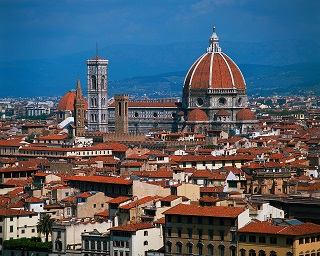
A 'Season To Taste'

Mary Davidek
A season to taste
I am a cooking and food magazine junkie. It all started with my Mom and a ritual that took place during our visit to the ‘beauty parlor’ (not a salon, but the beauty parlor!) for Mom’s weekly scheduled shampoo and set. Here she regularly scoured through the latest edition of ‘Family Circle’, ‘Good Housekeeping’ and ‘Sunset’ magazines and recited recipes in a much too loud voice so I (and everyone in a 20 yard radius) could hear her over the constant noise generated by the mission control-like dryer chair. I would nod with dutiful approval dotted with an intermittent ‘yep, sounds good’ which were typically enough to satiate her. To add to her enjoyment and proof I really was listening, I even managed to insert a question or two; “what is braising?” or “why does it have to be sifted?” This launched her into an explanation that today seems worthy of ‘Food Network’. However, one particular phrase seemed to arise on nearly every recipe and always required definition and clarification — “season to taste”.
Mom explained the following:
Add salt until it you taste it. If it seems bland- it probably is. Increase by a ¼ tsp. and taste after each addition.
Add seasoning and spices (pepper, fresh herbs, dried seasoning) until the taste is in balance with the rest of the flavors. Make sure spices and seasonings cook along with the dish. However, additional fresh herbs added at the end can make a big difference.
Add acid (Tabasco, lemon juice, or vinegar) if it tastes flat or one-dimensional. Hot sauce works in creamy dishes because the acid from the vinegar and the heat from the peppers boost the flavors. Keep a light hand; if the dish isn’t supposed to be “spicy hot” add just a splash of hot sauce then use vinegar or lemon juice.
Add sugar; the tried and true fix if you overdo it. Sugar balances both salty and bitter flavors. Adding a touch of sugar makes too salty taste less salty and too bitter or sour taste less bitter without actually decreasing the amount of salt or acid in the recipe.
The thing is, Mom’s beauty shop narrations were not idle or forgotten ideas of an affordable casserole or a quick and easy dessert, they were her inspiration for future meals and goodies that made it to the family table and eventually led to my life-long pursuit of ‘tasting’.
Here is one of my cold-weather favorites. It is hearty, spicy, savory and comforting; ideal to keep in the fridge and warm up after a day of visiting with friends and family or after hours of wrapping followed by seconds of unwrapping. Remember always adjust the spices as you progress and as in all recipes—season to taste!
I wish you perfectly seasoned greetings–
Happy Holidays!
Mary Davidek
Deconstructed Albondigas
Ingredients
- 4 Cups Beef Broth
- 4 Cups Chicken Broth
- 2 large cans crushed tomatoes (28 oz.)
- 2 large cans diced tomatoes
- 1 lb. ground beef
- 1 lb. spicy sausage
- 2 heads of cabbage, cored and diced
- 1 small bag frozen white corn
- 4-6 carrots thinly sliced
- 4-6 stalks diced celery
- 4 large cloves minced garlic
- 1 bunch of chopped cilantro (set some aside for garnish)
- 1 large diced brown onion
- Season to taste =)
Directions
Brown ground meat and/or sausage. Add to a large pot with all other ingredients. Cook over medium low heat until vegetables are to desired softness. To accelerate the cooking process, give the veggies a quick sauté before adding to the pot. Stir and taste often and, as always, add seasoning as needed.
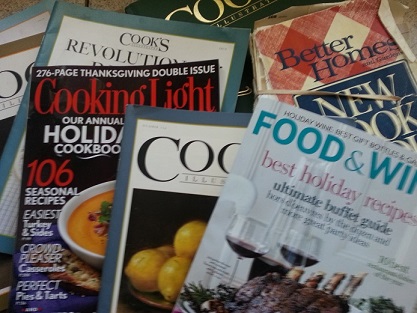
My current library. The Better Homes and Garden cook book was a wedding gift from who else; my Mom. Held together by a rubber band, for 24 years I have referred to this book filled with hand written notes and recipes.
‘Deconstructed’ is contemporary food lingo but Mom would have just said this was quicker and easier than making and cooking meatballs! This is tasty and easy to reheat during the upcoming week of merriment or freeze leftovers in containers for up to 6 months.
Dry, crisp and almost exotic; Castello di Amorosa’s Anderson Valley Gewurztraminer balances the spice and works with the richness of the ground meat and sausage. Perfect for a first course or as a hearty meal served with fresh bread or warm tortillas.
Raise a Glass! How Will You Celebrate 80 Years of Repeal?

Mary Davidek
Raise a Glass to Repeal Day! The End of Prohibition in the US
The turn of the twentieth century was indeed a dark (and dry) time in American history. Organizations like The Women’s Christian Temperance Union, which promoted Prohibition, believed alcohol to be the cause of most social ills. On January 16th, 1919, Congress passed the 18th Amendment, outlawing alcohol thereby putting an end to drunkenness, crime, mental illness, and poverty. (Ahem!)
Ironically, during Prohibition, America’s thirst increased. Organized crime rose to replace formerly legal methods of alcohol production and distribution. Ultimately, respect for the law diminished and drunkenness, crime and resentment of the federal government prevailed. Over the course of the next thirteen years, support for Prohibition waned as the nation awoke to the widespread problems Prohibition caused. The number of repeal organizations increased, and in 1932 Franklin D. Roosevelt ran for President on a platform that included the repeal of Prohibition. He won that race and on December 5th, 1933, Pennsylvania and Utah, the final states needed for a three quarters majority, ratified the 21st Amendment, repealing Prohibition and restoring our right to a celebratory drink. The 18th amendment remains the only amendment to our Constitution to ever be repealed.
On December 5th we celebrate Repeal Day and the end of prohibition in the US because it marks a return to the rich traditions and enjoyment of alcohol as a sacred and protected social custom. Conveniently located between Thanksgiving and Christmas, Repeal presents the perfect occasion to gather with friends and celebrate! Unlike St. Patrick’s Day or Halloween Repeal is a day we can all share in observing; it’s written in our Constitution.There are no outfits to buy, costumes to rent, or gifts to wrap. Simply celebrate Repeal Day by enjoying a glass of wine with a loved one.
Raise a glass!

The 18th Amendment
Ratified January 16, 1919
Section 1. After one year from the ratification of this article the manufacture, sale, or transportation of intoxicating liquors within, the importation thereof into, or the exportation thereof from the United States and all territory subject to the jurisdiction thereof for beverage purposes is hereby prohibited.
Section 2. The Congress and the several States shall have concurrent power to enforce this article by appropriate legislation.
Section 3. This article shall be inoperative unless it shall have been ratified as an amendment to the Constitution by the legislatures of the several States, as provided in the Constitution, within seven years from the date of the submission hereof to the States by the Congress.
The 21st Amendment
Ratified December 5, 1933
Section 1. The eighteenth article of amendment to the Constitution of the United States is hereby repealed.
The suggested pairing for your Repeal Day celebration!
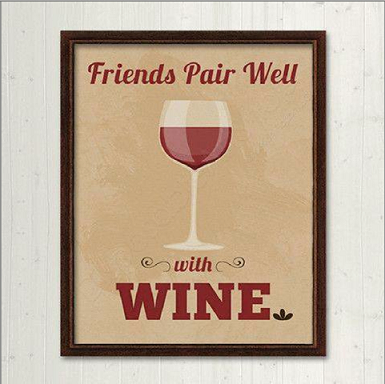
Make Black Friday 'Red'

Mary Davidek
Make Black Friday ‘Red’
For millions ‘Black Friday’ means time to do serious Christmas shopping –even before the last of the Thanksgiving leftovers are gone- shopping routes are planned and parking strategies formulated. The Friday after Thanksgiving is one of the major shopping days of the year. Dating back to the start of the Macy’s Thanksgiving Day Parade in 1924, the Friday after Thanksgiving has been known as the unofficial- official start to a bustling and prosperous shopping season.
The term ‘Black Friday’ was coined in the 1960s to mark the kickoff of the Christmas shopping season referring to stores moving from the ‘red’ to the ‘black’. Of course, this was when accounting records were kept by hand; red ink indicated a loss and black ink showed a profit. Retailers began to realize they could draw big crowds by discounting prices and ‘Black Friday’ became the day to shop bringing with it even better deals than last minute Christmas sales. Many retailers now open at 5 am or earlier(!!!) to hoards of people waiting anxiously outside.
However, more and more consumers are choosing to shop online, not wanting to wait outside in the early morning chill with the crush of other shoppers or a battle over the last most-wanted item. Online shopping is easy, dependable and with the many shipping specials and pricing incentives—the deals are hard to beat. Now this is where the red comes in…pour a big glass and let the bargains begin! It’s the only way to shop!
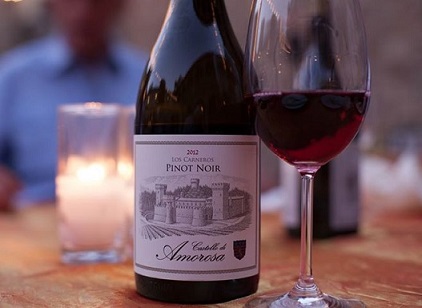
Castello di Amorosa’s Black Friday special!
